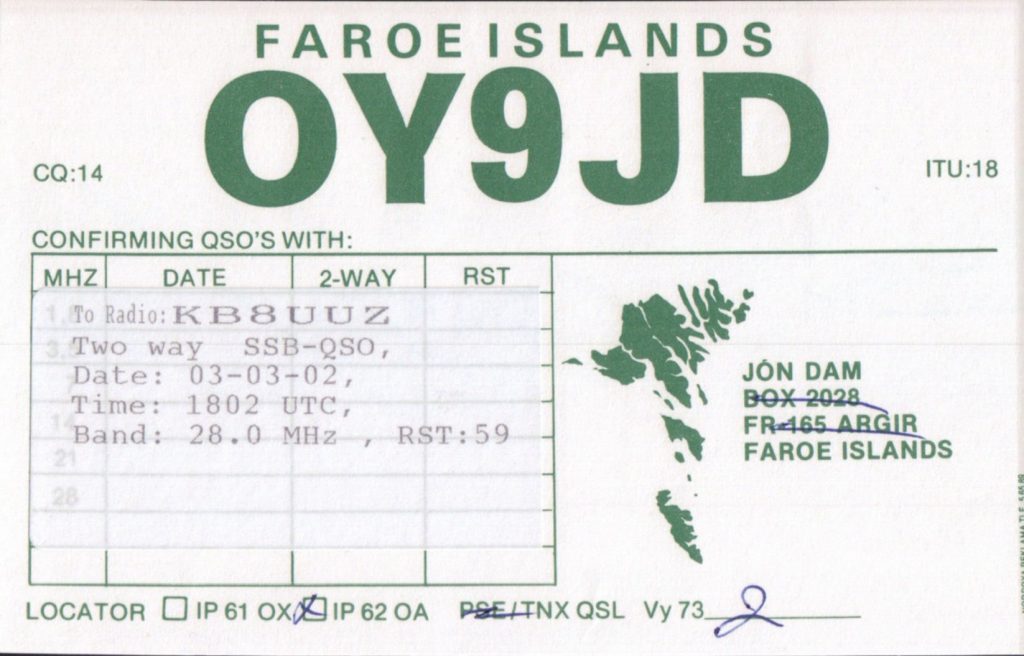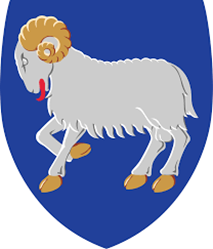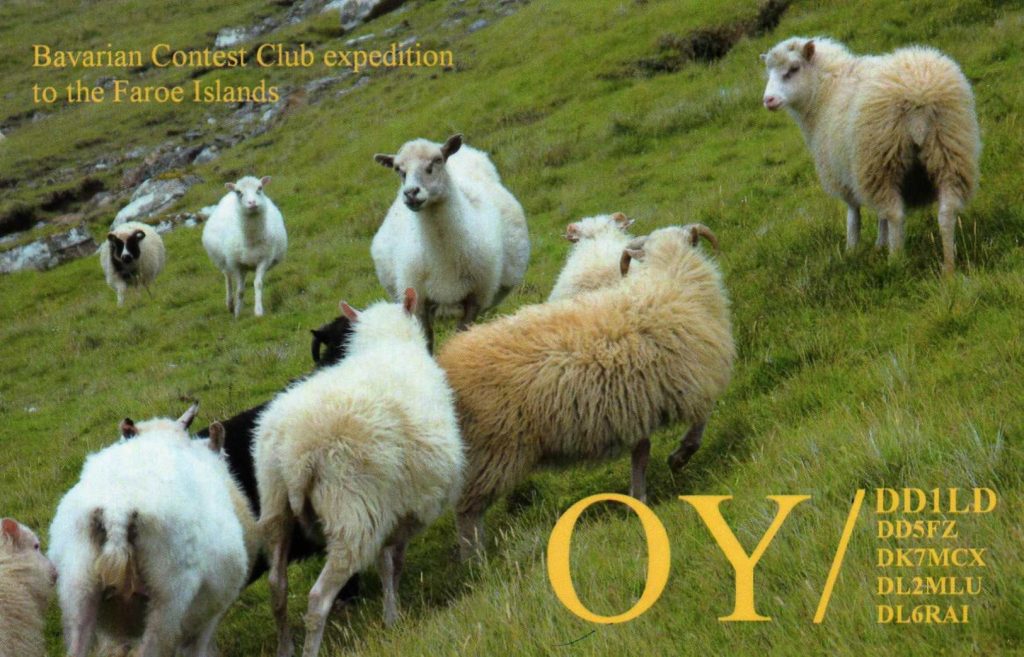The Faroe Islands QRV in June/July
If you’ve never made contact with the Faroe Islands, here’s your chance. From June 25 to July 5, DC8TM as OY/DC8TM and DF3TS as PY/DF3TS are scheduled to be operating on the HF bands in SSB and FT8 from this island group in the North Atlantic.
This autonomous territory of the Kingdom of Denmark is comprised of 18 major islands and around 780 smaller islands, islets, and skerries. The islands lie halfway between Iceland and Norway, about 200 miles from the Scottish mainland and 620 miles from Denmark. The Faroes, as they are sometimes called, ranked as the 208th Most Wanted DXCC Entity per Clublog as of May.
The Faroe Islands have a population of around 54,000 and a total area covering 540 square miles (close in size to Phoenix). The islands have been self-governing—aside from military, currency, foreign relations, and other matters— since 1948, and are not part of the European Union. Their DXCC prefix, OY, while sounding particularly Yiddish, derives from the islands’ name in Faroese—Føroyar. Oyar is the plural for oy, which means “island” in older Faroese, or oyggj in modern Faroese.
The islands are home to more than 350 species of birds, including puffins, fulmars, storm petrels, black-legged kittiwakes, and their national bird, the Eurasian oystercatcher, known by islanders as the tjaldur. The annual arrival of Eurasian oystercatchers around the second week of March heralds the coming of spring. Never seen one in person? Watch this short video. Local DX Engineering fans will note that like the Eurasian oystercatcher, the buzzards return to Hinckley, Ohio (about 30 miles from DX Engineering headquarters in Tallmadge) every year in mid-March.
Over 1,200 years of isolated breeding on the islands has led to several domestic breeds being unique to this land, including the Faroe Pony, Faroe Cow, and Faroe Duck. There are reportedly fewer than 100 Faroe Ponies left on the islands. There are no trees native to the Faroe Islands, but some species transplanted from regions with similar climates (e.g., the Magellanic subpolar forests of Chile) have survived there.
A Few More Faroe Islands Facts
- Seventeen of the archipelago’s 18 main islands are inhabited. Only the smallest island, 247-acre Litla Dimun, has no human population, though it is home to Faroe Sheep and seabirds.
- The Faroe Islands’ economy is almost completely dependent on fishing and fish farming.
- Traditional Faroese foods include mutton (see sheep discussion below) and tvøst og spik, a dish made from blubber and meat from a pilot whale.
- In 2014, the Faroe Islands soccer team shocked the world by defeating the much-higher-ranked team from Greece 1-0. In a UEFA 1992 qualifier, the underdog Faroe Islands team won its first-ever competitive match by beating Austria 1-0 (see a short video about their upset victory here—the commentator’s reaction is outstanding).
QSL Cards
The active hams at DX Engineering have had great success contacting the Faroe Islands over the years (a good reason to contact them for help with your gear if you’d like to do the same). Here are a couple of QSL cards from their collections.
Tom, KB8UUZ, DX Engineering technical writer, received this card from OY9JD.

Dave, K8DV, DX Engineering customer/technical support specialist, reached OY/DD1LD in July 2008 on 20M CW during the Bavarian Contest Club’s DXpedition to the Faroe Islands. The ovine-oriented QSL card is below. As noted on the website Faroeislands.fo, “Sheep outnumber the human population by roughly 70,000 to 50,000 and visitors to the Faroe Islands will quickly discover that sheep are integral to the Faroese way of life—and through history the sheep has been one of the main pillars of the Faroese society.” A golden-hooved ram is featured on the Faroe Islands coat of arms:

It is believed that the small, hardy breed known as Faroese Sheep were brought to the islands during the Viking age. A decrease in the number of sheep in the 17th century prompted the importation of sheep from Iceland and the Scottish Isles. More Scottish sheep were subsequently brought to the islands to mix with the original Norse breed. The knitting, wearing, exporting, and trading of woolen garments has also been a major aspect of life in the Faroe Islands. As noted on pebblemag.com, “The Faroe Islands’ knitting is some of the best in the world, often done by women at home, using traditions and Faroese knitting patterns handed down from generation to generation.”

Want to upgrade your DXing capabilities? The Elmers at DX Engineering are here to lend an ear. Reach out to them at Elmer@DXEngineering.com. Find everything you need at DXEngineering.com to up your game, including transceivers, antennas, amplifiers, headsets, and more.
Editor’s Note: Every month, DX Engineering features QSL cards from our team members’ personal collections. To highlight upcoming DXpeditions, we’ll be displaying a few of our favorite cards along with details about what it took to make these contacts. We’re excited to share some of the special cards pulled from the thousands we’ve received over the years. We look forward to seeing your cards as well!

